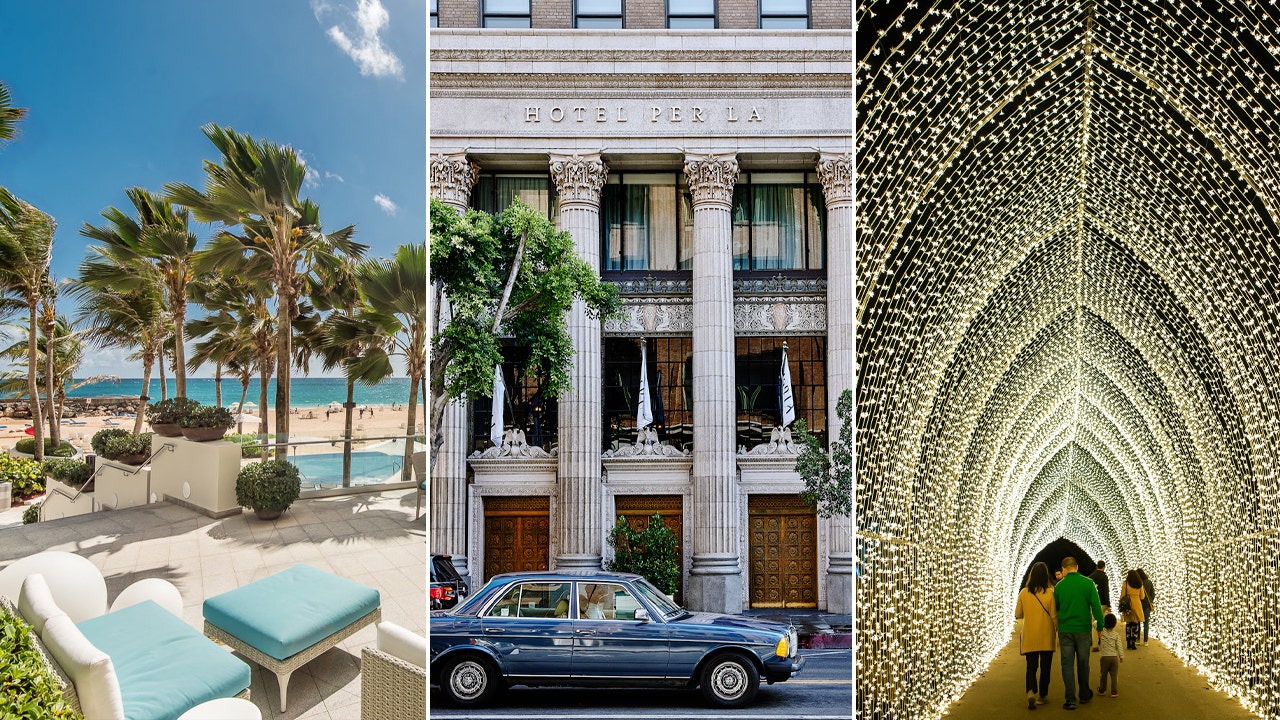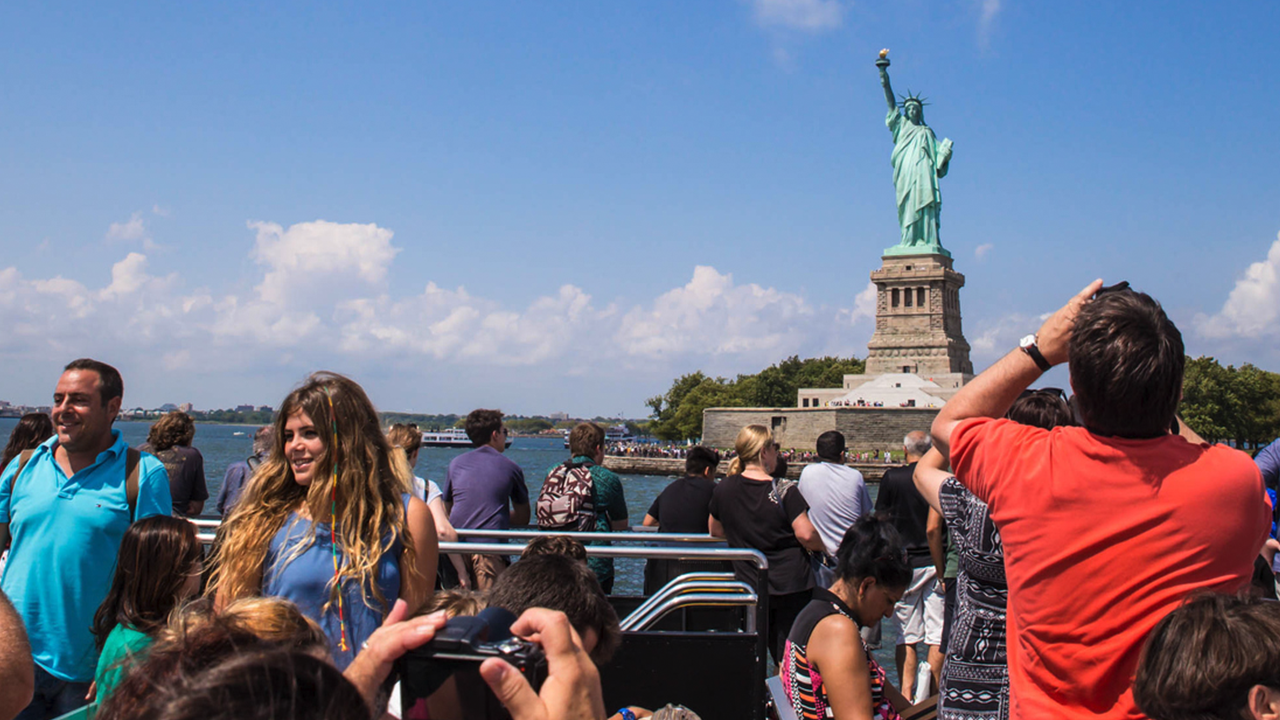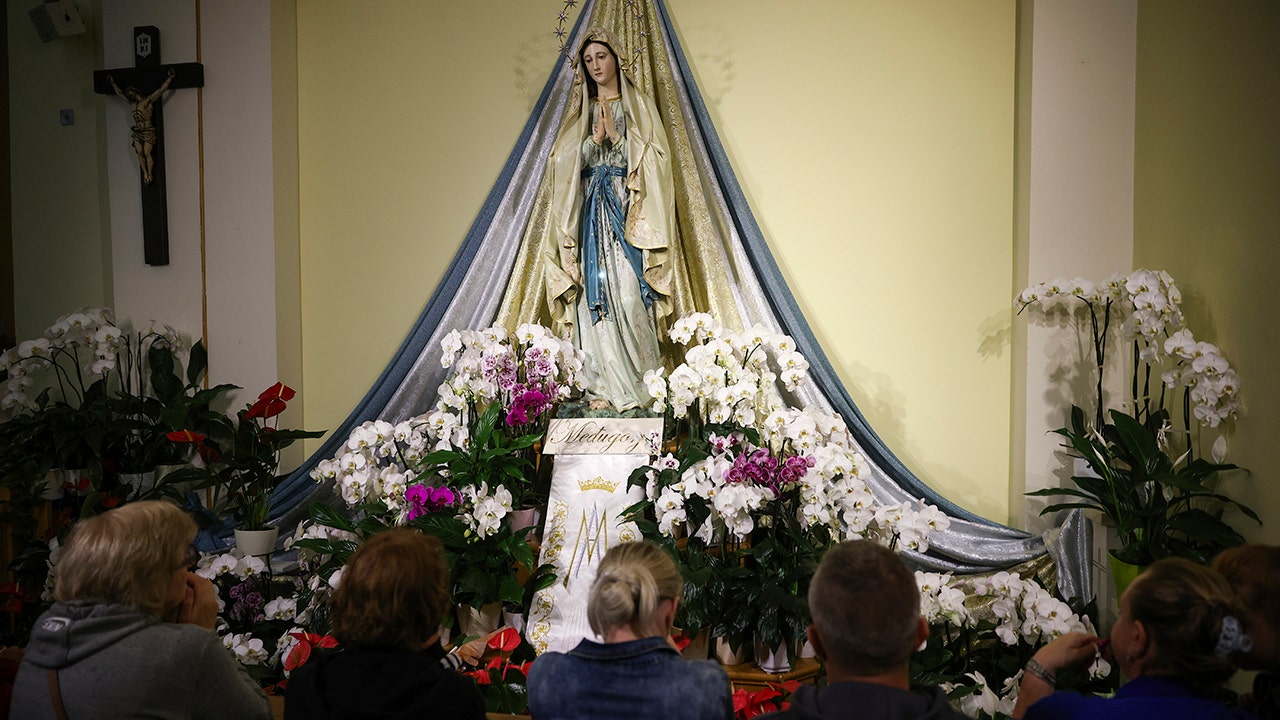Martin Luther King Jr. was shot dead 56 years ago today in Memphis, Tennessee.
His assassin “hoped to kill MLK’s great and widespread dream of unity,” Alveda King, the civil rights leader’s niece, posted on Thursday morning, April 4, on social media.
The killer failed in his mission, King wrote in her message.
CHRISTIAN FILMMAKER JIM WAHLBERG SAYS MOTHER TERESA ‘LED ME’ TO GOD AND TO SOBRIETY IN PRISON
“Praise God … The dream didn’t die with my uncle. His dream is alive, and so are our dreams; for our Lord Jesus is alive,” she wrote.
The night before he was murdered, the powerful orator thundered prophetically from the pulpit of Bishop Charles Mason Temple in Memphis, “Mine eyes have seen the glory of the coming of the Lord.”
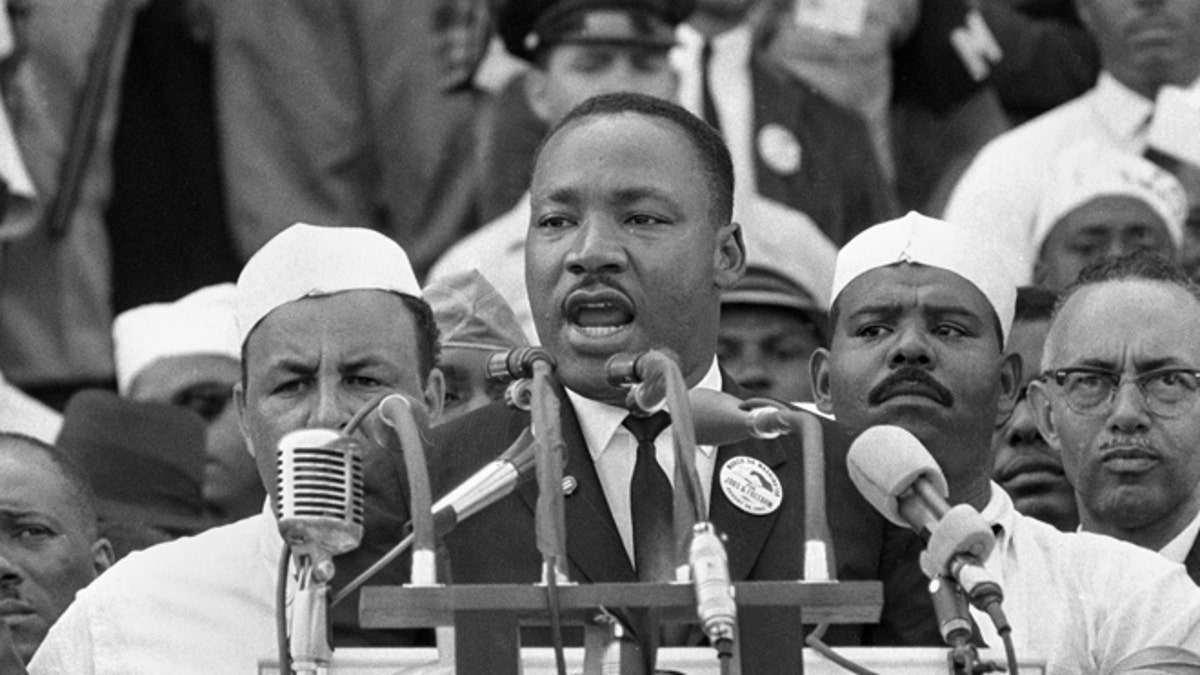
Dr. Martin Luther King Jr., head of the Southern Christian Leadership Conference, addresses marchers during his “I Have a Dream”speech at the Lincoln Memorial in Washington, D.C. August, 28, 1963. (AP Photo/File)
King Jr.’s death was only the first of several tragedies suffered by the family. Rev. A.D. King, Martin’s little brother – Alveda King’s father – died under mysterious circumstances the following year.
Her grandmother, Alberta King, also died shockingly. She was shot dead in 1974 in front of a Sunday congregation at Ebenezer Baptist Church in Atlanta, Georgia from where the King family led the civil rights movement.
“His dream is alive, and so are our dreams; for our Lord Jesus is alive.”
King Jr.’s life on Earth ended in Memphis. But the civil rights movement he led marched across a vast swath of the country.
Alveda King, when asked by Fox News Digital, suggested visiting these five landmarks in the civil rights movement to learn more about the march for justice – and the price paid by her family.
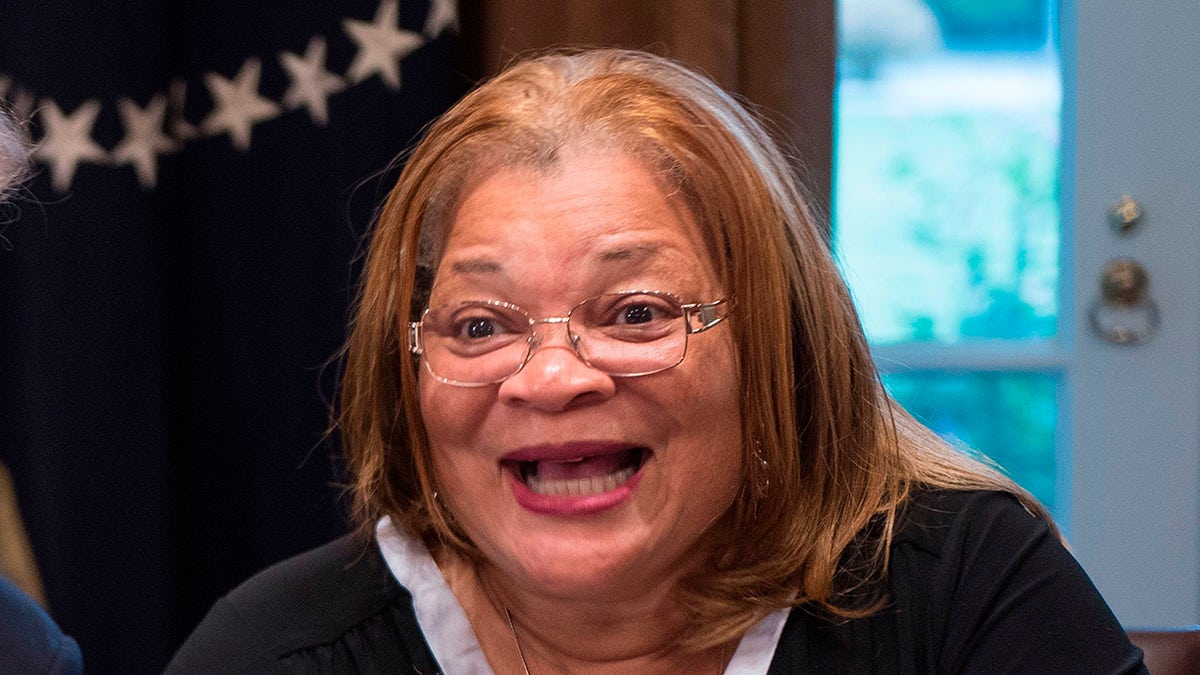
Alveda King, niece of Rev. Martin Luther King Jr. and daughter of Rev. A.D. King, during a meeting with inner city pastors at the White House in Washington, D.C., Aug. 1, 2018. (JIM WATSON/AFP via Getty Images)
1. The A.D. King home in Birmingham, Alabama
Rev. A.D. King, just 18 months younger than his brother Martin Jr., was ministering at the First Baptist Church of Ensley and leading the Birmingham Campaign of the civil rights movement in the tumultuous year of 1963.
MEET THE AMERICAN WHO GAVE BIRTH TO THE CIVIL RIGHTS MOVEMENT, ALBERTA KING, ‘GAVE HER ALL FOR CHRIST’
Two bombs exploded at the reverend’s home in an assassination attempt on May 11, while he was home with his wife, Naomi, and five children – including Alveda King, who was just 12 years old at the time.
2. The birth home of King children in Atlanta, Georgia
The Rev. Martin Luther King Sr. and his wife Alberta (Williams) King lived in a beautiful Queen Anne-style home at 501 Auburn Ave. when they welcomed three children: daughter Willie Christine and her younger brothers, Martin Jr. and Alfred Daniel (A.D.).
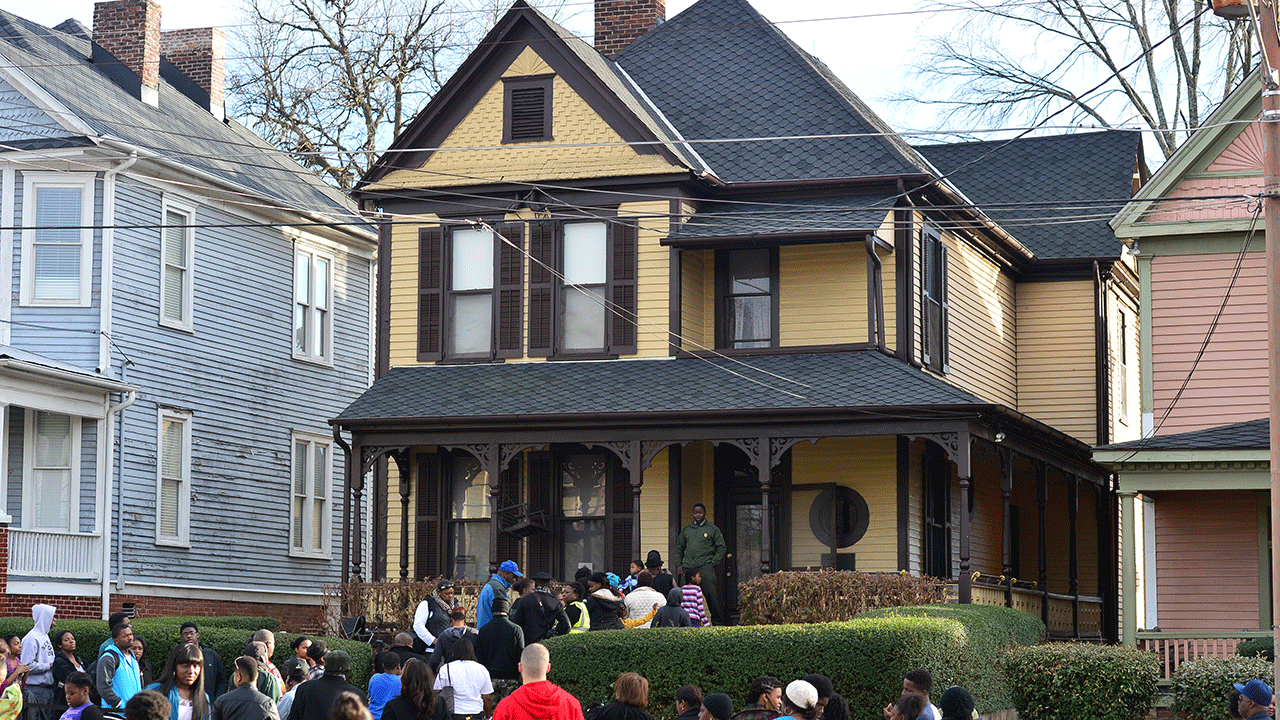
Civil rights leaders Revs. Martin Luther King Jr. and Alfred Daniel (A.D.) King were born in this Atlanta home. (Prince Williams/FilmMagic)
The home today is a centerpiece of the Martin Luther King Jr. National Historical Park.
The home is closed for an “extensive rehabilitation project” through Nov. 2025 following an attempted arson attack in December 2023.
The exterior remains a coveted bucket-list destination for photographs and selfies.
3. Ebenezer Baptist Church in Atlanta, Georgia
The congregation was founded in 1886 with just 13 members. Rev. Adam Daniel Williams, MLK’s Jr. grandfather, became minister in 1894.
MEET THE AMERICAN WHO WROTE ‘THE BATTLE HYMN OF THE REPUBLIC’
The church blossomed and became the spiritual headquarters of the civil rights movement under the Williams-King family by the 1950s.

The Ebenezer Baptist Church in Atlanta, Georgia (Photo by: Joe Sohm/Visions of America/Universal Images Group via Getty Images)
The church also grew famous for its choir and music, led by Alberta King, Martin Jr.’s mother. The choir performed at the Atlanta premier of the movie “Gone with the Wind” in 1939.
Martin Luther King Jr. was both baptized at and mourned from Ebenezer Baptist on April 9, 1968. The funerals for both his brother and mother were held at the church, as well.
4. Edmund Pettus Bridge in Selma, Alabama
The bridge over the Alabama River became the center of global attention on March 7, 1965, as civil rights demonstrators, marching to Birmingham in favor of voting rights, met a violent response on “Bloody Sunday.”
CLICK HERE TO SIGN UP FOR OUR LIFESTYLE NEWSLETTER
“The televised attacks were seen all over the nation, prompting public support for the civil rights activists in Selma and for the voting rights campaign,” writes CivilRightsTrail.com.
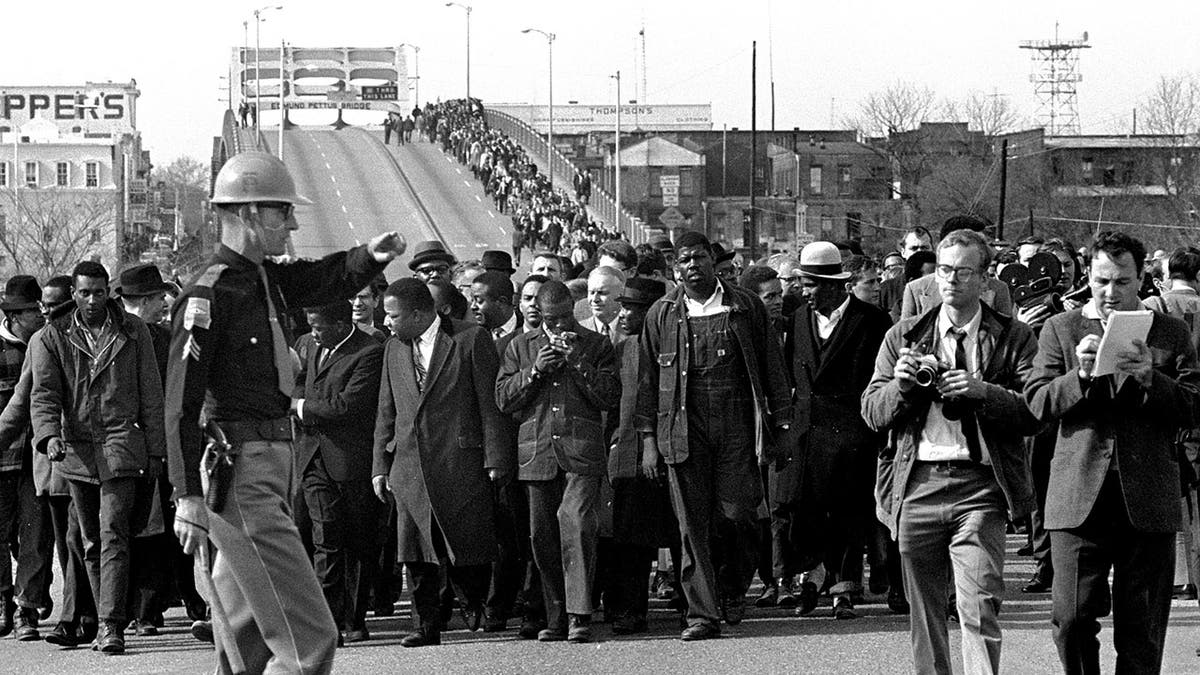
Demonstrators, including Dr. Martin Luther King, Jr., stream over an Alabama River bridge at the city limits of Selma, Alabama. (AP Photo)
The Edmund Pettus Bridget today is a National Historic Landmark and the frequent site of events and commemorations in honor of Martin Luther King Jr. and the battle for civil rights.
5. Monson Motor Lodge acid attack site in St. Augustine, Florida
Now the Bayfront Motel, the Monson Motor Lodge was the scene of one of the most unusual and disturbing events in the march for civil rights.
Alveda King cited it as a nearly forgotten event that speaks to the dangers faced by civil rights activists.
A bi-racial group of people plunged into the motor-lodge swimming pool on June 18, 1964, to protest segregation.
“The searing image helped propel passage of the Civil Rights Act of 1964, outlawing discrimination in public places>”
James Brock, the manager of the inn, responded by pouring acid into the pool – a potentially disfiguring and even deadly attack.
CLICK HERE TO GET THE FOX NEWS APP
Photos of the shocking incident hit newspapers nationally.
“The searing image helped propel passage of the Civil Rights Act of 1964, outlawing discrimination in public places,” First Coast News of Florida wrote last year.
For more Lifestyle articles, visit www.foxnews.com/lifestyle.


